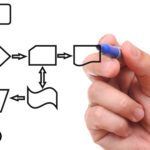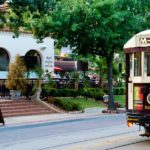
Whereas within the U . s . States, the legacy of the vibrant contemporary Deaf
culture
could be tracked back via a scholarly and academic literature that spans almost
fifty
years, in The country that tradition is scarcely ten to 15 years of age. Furthermore,
within The country, the struggle for that official recognition of sign language (including, for instance,
Spanish Sign Language [LSE ] and Cataln Sign Language [LS C]) culminated
only lately. Legislation supporting sign languages was attracted in 2005 and lastly
based on the Spanish Senate in 2007. Thus, although within the U . s . States,
Deaf
culture continues to be a recognised beginning point for research (a minimum of within communities
of deaf people, college classes, along with a substantial part of disciplines
such
as linguistics and anthropology), in The country it’s been a topic more debate
over
time.
The historic documents and demanding essays incorporated within this book form a
story
that starts with early (mis)understandings of deafness being an illness, moves
through
turbulent centuries of misguided deaf education, and ends using the official
recognition
of sign languages (and also the acceptance of Deaf culture) within the The country from the
twenty-first century. History is constantly formed through conflict, because it
evolves,
which is subsequently reshaped because it is retold. Thus, this volume doesn’t seek
to
present a tidy, straightforward narrative from the good reputation for deaf individuals
The country. Rather,
it constitutes an accumulation of disparate voices incorporating written documents
by hearing and deaf people lawyers, teachers, historians, linguists,
poets, visual
artists, travelers, and researchers of culture Spanish writing from inside
The country and
also individuals writing from abroad. I have faith that this method enables readers to
assess
the character from the conflicts which have formed and then shape the
experience
of deaf individuals The country.
The finest conflict within this lengthy history could be concisely summarized in
this
way: Around the one hands, the oralism sign of the first period in deaf
education
deserves note since it broke with deep-rooted philosophical ideas
concerning deafness and language. This assimilationist model perhaps had good
intentionsto further incorporate deaf people into society. That’s, because the
readings
constituting this volume reveal, there have been tangible social benefits for individuals
who
could learn how to speak. For instance, nonspeaking deaf everyone was routinely
prohibited
from inheriting property, but individuals who could learn how to speak were permitted to
inherit. However, whereas a brief history of benevolent paternalism
regarding
deaf individuals The country might have had its benefits, it’s also unquestionably
avoided
the entire integration of deaf people into society. From todays perspective, in
which
there’s now a consensus that sign languages are full-fledged languages and never
just limited codes, you can easily observe that the oralist concentrate on teaching deaf
students
to talk expresses the bias of the majority hearing society, which, good
intentions or
not, used its social and cultural power with techniques that particularly discriminated
against
deaf people of times.
This problematic management of deaf people fused along with other cultural types of
discrimination. Even at first of oralism within the mid-sixteenth century,
only individuals deaf individuals who belonged to fortunate families may need
instruction. Afterwards, as a few of the readings within this volume indicate, The country
was
relatively slow to build up public schools for deaf students, as well as when
schools
were founded, they frequently closed quite prematurely. Furthermore, the schooling
needs
of scholars attending these schools weren’t adequately addressed as being an issue
from the bigger hearing society. More lately, the assimilationist attempt
to
incorporate deaf people into hearing society continues to be only partly effective,
like a
quantity of documents within this collection testify, not just in relation to education
but
also when it comes to employment. The simple fact is the fact that oralism has already established
lasting
repercussions in The country: selections within this volume indicate that signed
tv shows
and public interpreters made an appearance only back in 1984 and 1986, correspondingly, and just
after
another two decades would The country would see legislative support for sign
language.
Ultimately, this conflict between deaf people and also the society that they must
 educate themselves, find work, forge social relationships, and so on continues to be
educate themselves, find work, forge social relationships, and so on continues to be
a place
of interest in The country just because it is elsewhere.
Unquestionably, hearing people must accept deaf people by themselves terms.
Nonetheless, the issue is more complicated. Another conflict that seems within the
readings scattered throughout this book is one that’s manifest within deaf
communities
themselves. Just like, since 1550, individuals (fortunate) deaf individuals who were inside a
position to profit from dental language instruction were more in a position to advance in
a
hearing society, to this day you will find individuals deaf individuals who enjoy greater access
to
dental language and are more inclined to assume leadership positions within the Spanish
deaf
communities. Greater than a couple of from the selections within this book make time to reflect
on
a among prelingually and postlingually deaf people, that is an
issue
of concurrently both a linguistic along with a social nature.
Although readers acquainted with the scholarly literature on Deaf culture and
the linguistics of ASL within the U . s . States will definitely know about the
two
(interrelated) conflicts I’ve pointed out, there’s yet another conflict of
interest that
is particular for this group of documents. This really is possibly better understood being an
encounter
than the usual conflict, also it includes a prolonged dialogue between researchers
in The country and individuals within the U . s . States. It’s most curious, considering that Spanish
historic
documents laud the significance of the Spanishness training the mute
to talk, the country that’s today considered because the birthplace of deaf
education
(The country) should become reinvigorated by direct influence from America. Because the
act of hearing aid technology circuitous route of the movement (The country to France to America
to The country) constitutes the entire of the volume, for now it’s sufficient
to
state that deaf education in The country was introduced to France with a teacher named Jacobo
Rodrguez Pereira, this transposition would ultimately begin to see the development
of
Abb Charles-Michel de lEpes methodical signs (spoken-language grammar
made in visual form), which the transmission of sign language towards the
U . s .
States happened through the one and only Laurent Clerc, a deaf instructor who
supported Thomas Hopkins Gallaudet from France to found the very first school for
the deaf in Hartford, Connecticut, in 1817.
Resourse: http://gupress.gallaudet.edu/excerpts/







